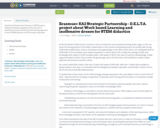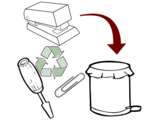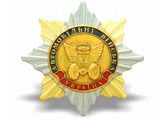
THIS IS ALL ABOUT SPORT CARS.
- Subject:
- Automotive Technology and Repair
- Material Type:
- Case Study
- Author:
- KANCHANA R
- Date Added:
- 05/03/2020

THIS IS ALL ABOUT SPORT CARS.

En este espacio podran aprender a realizar la Comprobación del estado de la batería del Automómovil de una forma básica y fácil.

Set of training programs to introduce the topic of green and electrical mobility at I-VET level. Programs include hybrid and electric vehicles, high voltage batteries and safety issues, as well as electronic circuits such as ECU in cars and ADAS systems.

Intellectual Outputs from Erasmus+ DELTA project, offering teaching programmes about the use of inoffensive drones and Wrok based learning approach to boost STEM didactics in VET secodary education

AYUDA AL MEJOR CONOCIMIENTO DE LOS CONDUCTORES

This resource will aid you in the process of wetsanding your paint in preparation for the final buff and polish.

Test

This lesson plan is based on Briggs & Stratton's Small Engines course. Please see the attached documents:Carburetor Disassembly & Assembly Lesson PlanCarburetor Disassembly & Assembly Print OutBriggs & Stratton - Carburetor Slides

Un dispositif d'enseignement mi-fini, destiné aux enseignant·e, sur la réparation d'objets de bureau. Les élèves travaillent directement avec les objets, transmis avec une carte-énigme : ils doivent découvrir la panne et la résoudre, et peuvent répondre à des questions subsidiaires.Le dispositif permet d'aborder la technologie en commençant par l'activité manuelle, avec les élèves de 1er ou 2e cycle, ou en classe de soutien.

In this lesson, students will learn about the safety hazards associated with the small engines shop. Students will learn how to avoid those safety hazards to operate the safest learning environment.

My firs material here

These Hands Video - Afa: Auto Mechanic

This five-day lesson introduces students to micrometers, explains how to read and use these tools, and assesses students' abilities to demonstrate proper micrometer usage and reading.

This is a simple and brief overview of a bandsaw, and the basic controls of the bandsaw for operation.

Пропонується математичне моделювання руху багатоцільових броньованих автомобіліввійськового призначення. Розглядається можливість покращення умов їх руху та підвищенняпрохідності шляхом забезпечення оптимального перерозподілу тиску повітря в шинах коліс.

مرحبا بكم في موقع صناعات الحرير الطبيعي